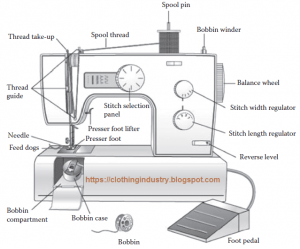Sewing
Sewing is the art of using needle and thread to fasten pieces of cloth or stitch patterns into fabrics. There are various different styles of stitching, including:
-
- Running stitch – basic ‘over-under’ stitching, most commonly used style
:max_bytes(150000):strip_icc()/RunningFill-5978c04d0d327a0011b23077.jpg)
https://www.thesprucecrafts.com/working-the-running-stitch-1177571 - Basting stitches

https://sew4home.com/tips-resources/sewing-tips-tricks/machine-basting-basics-why-and-how https://crafts.tutsplus.com/tutorials/embroidery-fundamentals-how-to-do-backstitch–craft-18328
- Backstitching
https://crafts.tutsplus.com/tutorials/embroidery-fundamentals-how-to-do-backstitch–craft-18328
You can find more styles of stitching at https://takelessons.com/blog/learn-basic-sewing-stitches-z13 .
- Running stitch – basic ‘over-under’ stitching, most commonly used style
Sewing Machines
Sewing machines are electric sewing devices that use two spools of thread and a rapid needle to make precise stitches. While these are much faster, they can be difficult to learn how to use. Below is a set of general guidelines on how to get started, as well as a diagram of the internals of the sewing machine:
- Install the needle into the post; tighten with thumbscrew
- Use the thread guides to thread the needle from the spool and the bobbin
- Turn on machine, guide fabric under the needle with bulk of it to the left
- Use foot pedal or knee bar to control the speed.

You can find more detailed guidelines at https://www.wikihow.com/Use-a-Sewing-Machine .
Comparison
There are pros and cons to either using a sewing machine or sewing by hand. While hand sewing is sufficient for simple stitching, such as adding buttons, hemming, or finishing machine-sewn projects, a sewing machine would be more useful for intricate jobs that require higher numbers of stitches.
Locations on Campus
You can find sewing machines or hand-sewing equipment at each of the on-campus locations below:
- IDEATE lending desk
- Morewood Gardens Makerspace
- School of Drama Costume Shop
- CMU Art Store (needles, thread, etc.)